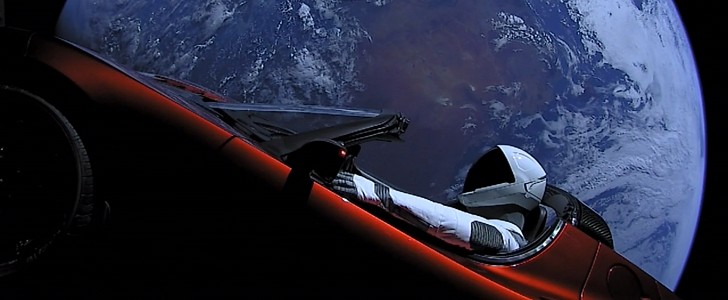On February 6, 2018, Tesla CEO Elon Musk made history when he launched a car, a first-generation Roadster, into space. That Roadster, along with its driver / pilot known as Starman, has now made a first close approach with Mars.
It’s been two years and eight months since the historical event and, while interest in the Roadster and Starman’s journey has diminished a bit, it’s still impressive. Just in case you woke up this morning and, while sipping coffee, were quietly asking yourself, “gee, I wonder where what Starman is up to today,” as one does, the answer comes from SpaceX itself: Starman is basking in the sight of the Red Planet. Or did, briefly.
“Starman, last seen leaving Earth, made its first close approach with Mars today - within 0.05 astronomical units, or under 5 million miles, of the Red Planet,” SpaceX says in a recent tweet.
Sure, it’s not like Starman came within touching distance of Mars, but it’s still closer to it than it is to Earth right now, according to the WhereIsRoadster website, which has been tracking progress of the Roadster and its pilot. The same source notes that, if the battery on the Roadster is still working, Starman will have listened to Space Oddity 265,533 times in one ear, and to Is there Life On Mars? 357,794 times in the other.
Starman is a mannequin dressed up in a prototype of the SpaceX space suit, and there’s another, smaller version of it inside the Hot Wheels toy Roadster on the dashboard. A data storage device with a copy of Isaac Asimov's Foundation novels is included, just in case the duo encounter aliens on their space journey.
The Roadster was launched into space on board the SpaceX Falcon Heavy rocket, with no particular target in mind. It sped away at 4,641 mph (7,469 kph) and, according to consensus, it will continue to move into space until it collides with something and is destroyed. Unless it hasn’t happened already.
“Starman, last seen leaving Earth, made its first close approach with Mars today - within 0.05 astronomical units, or under 5 million miles, of the Red Planet,” SpaceX says in a recent tweet.
Sure, it’s not like Starman came within touching distance of Mars, but it’s still closer to it than it is to Earth right now, according to the WhereIsRoadster website, which has been tracking progress of the Roadster and its pilot. The same source notes that, if the battery on the Roadster is still working, Starman will have listened to Space Oddity 265,533 times in one ear, and to Is there Life On Mars? 357,794 times in the other.
Starman is a mannequin dressed up in a prototype of the SpaceX space suit, and there’s another, smaller version of it inside the Hot Wheels toy Roadster on the dashboard. A data storage device with a copy of Isaac Asimov's Foundation novels is included, just in case the duo encounter aliens on their space journey.
The Roadster was launched into space on board the SpaceX Falcon Heavy rocket, with no particular target in mind. It sped away at 4,641 mph (7,469 kph) and, according to consensus, it will continue to move into space until it collides with something and is destroyed. Unless it hasn’t happened already.
Starman, last seen leaving Earth, made its first close approach with Mars today—within 0.05 astronomical units, or under 5 million miles, of the Red Planet pic.twitter.com/gV8barFTm7
— SpaceX (@SpaceX) October 7, 2020




